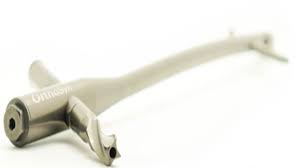
Zimmer Biomet’s Bactiguard-coated orthopedic trauma implants have recently received European regulatory clearance and CE mark. Preparations for registering the implants in the U.S. market are also ongoing. The Bactiguard technology was originally developed by the Swedish medical device company, which goes by the same name. The company focuses on developing solutions that reduce the risk of healthcare-associated infections and the overall use of antibiotics.
I am very pleased that the CE mark has been secured for Bactiguard-coated Zimmer Biomet trauma implants. This clearance will pave the way for a European market launch in 2021. At the same time, we are preparing for the submission of the U.S regulatory file,
Cecilia Edström, Bactiguard CEO
The partnership with Zimmer Biomet has the potential to expand Bactiguard’s current license business and make a substantial contribution to its recurring license revenues. Zimmer Biomet has also announced their plans to launch the trauma products in Europe this year and apply for FDA clearance in the U.S.
Background to Bactiguard’s license agreement with Zimmer Biomet
In September 2019, Bactiguard entered into an exclusive global license agreement with Zimmer Biomet. This agreement enabled them to apply infection preventive coating to the company’s orthopedic trauma implants. An upfront license fee of $3 million USD was put on the table along with an additional contingent payment of $2 million USD based on U.S. regulatory clearance and royalties on net sales.
Bactiguard Infection Protection is based on a very thin noble metal alloy coating, comprised of gold, silver, and palladium that is attached to medical devices. When in contact with fluids, these metals together create a galvanic effect that reduces microbial adhesion, decreasing the risk for biofilm formation that usually leads to infections.
Orthopedic Trauma Devices Market Players
DePuy Synthes is the current leading competitor in the European orthopedic trauma market. This position is the result of being the market leader in the plates and screws market, the largest trauma segment. This can be attributed to the company’s lead in locking plate and screw systems, which the company first introduced in 2002.
Stryker holds the second-leading position in the market which can be attributed to its lead in the intramedullary nail and intramedullary hip screw segments. Smith & Nephew is the third largest European orthopedic trauma market company. The company’s highest sales were in the intramedullary nail market segment.
Zimmer Biomet comes in as the fourth-leading competitor in the European orthopedic trauma market. The company’s market share is highly distributed across the different segments, with its strongest presence being in the bio absorbable fixation and intramedullary nail markets.
Orthopedic Trauma Devices Market Forecast and analysis
Overall, the European orthopedic trauma device market size was valued at over €800 million in 2020, which is expected to decrease to €783.1 million by 2026. One of the major limiters to the European trauma market is the new Medical Device Regulation (MDR) that will be put into force by the European Union (EU) in May 2020. This will change the procedures for introducing new products into the market, making it a considerably more time-intensive and cost-intensive process.
Register to receive a free European Market Report Suite for Orthopedic Trauma Devices 2020 – 2026 synopsis
Despite the downwards pressure being applied by the upcoming MDR’s, the aging population and growing number of people with obesity are expected to help drive the market. The World Health Organization (WHO) estimates that almost 50% of people living in Europe are overweight, with around 20% being obese. As obesity and age increase the risk of bone fractures due to reduced bone density, the increased demand for fixation devices is anticipated to fuel the market growth in Europe.
Via: Cision